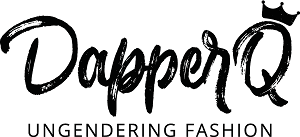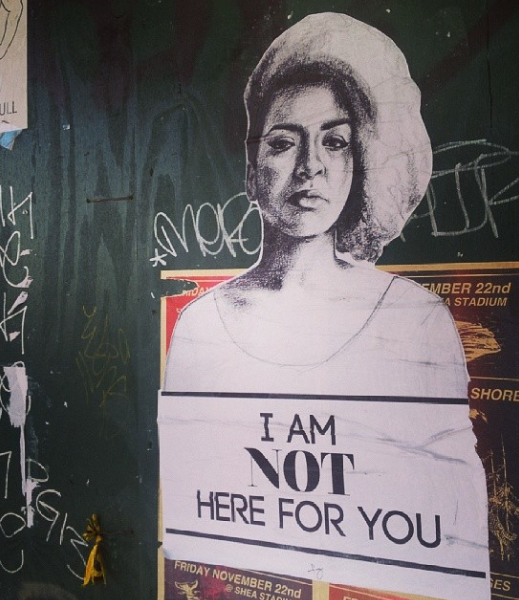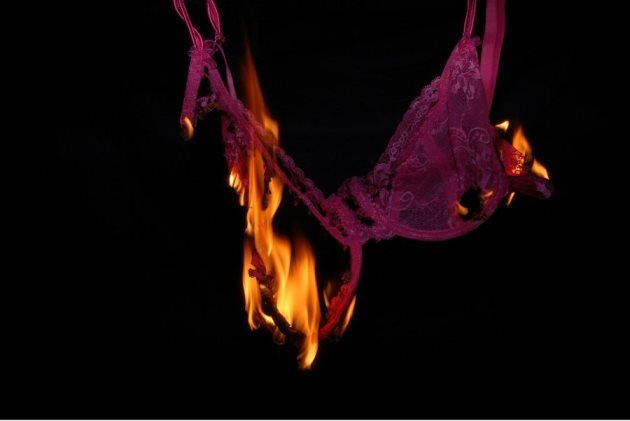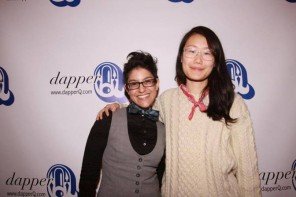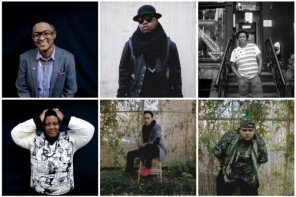A Conversation between Qwear Founder, Sonny Oram, and Members of the dapperQ Community
By Sonny Oram and Jaime Marie Estrada, with contributions by:
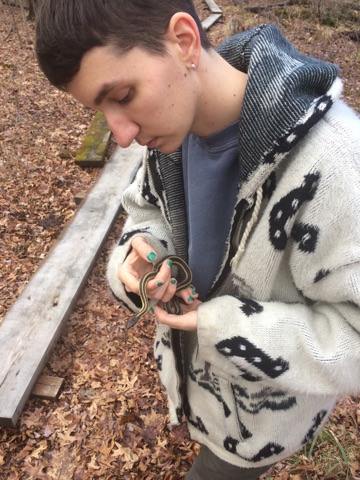 Cade Scheer
Cade Scheer
 Olivia McPherson
Olivia McPherson
 Zoe Gould
Zoe Gould
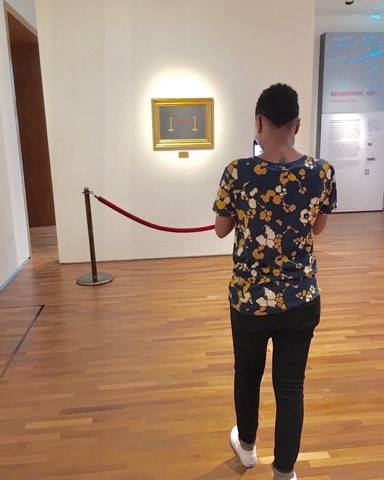 Kayla Harrison
Kayla Harrison
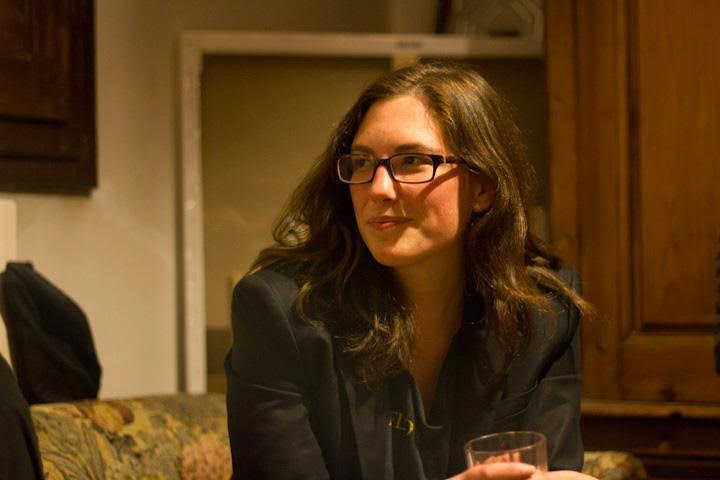 Rosemarie Monan
Rosemarie Monan
Also,
Tim Wilfong
NiK Kacy
Arlyn Katen
Lauren Zelaya
Vida Carson
Jade
Brief:
Recent responses to the launch of “Hi Femme!” have sparked a conversation around the need for femme-inclusion on dapperQ, a platform originally pioneered to feature butch and masculine-of-center queer fashion. This piece dissects the many ways femmephobia manifests itself in the queer community, the reasons why our current mainstream femme representation is
not enough, and the intersectionality of femme identities which are often overlooked. By sharing our stories and contributions from femmes, we’re encouraging the readers of dapperQ to join us in saying: Femmes not only belong on dapperQ, but femmes add value to the dapperQ platform.
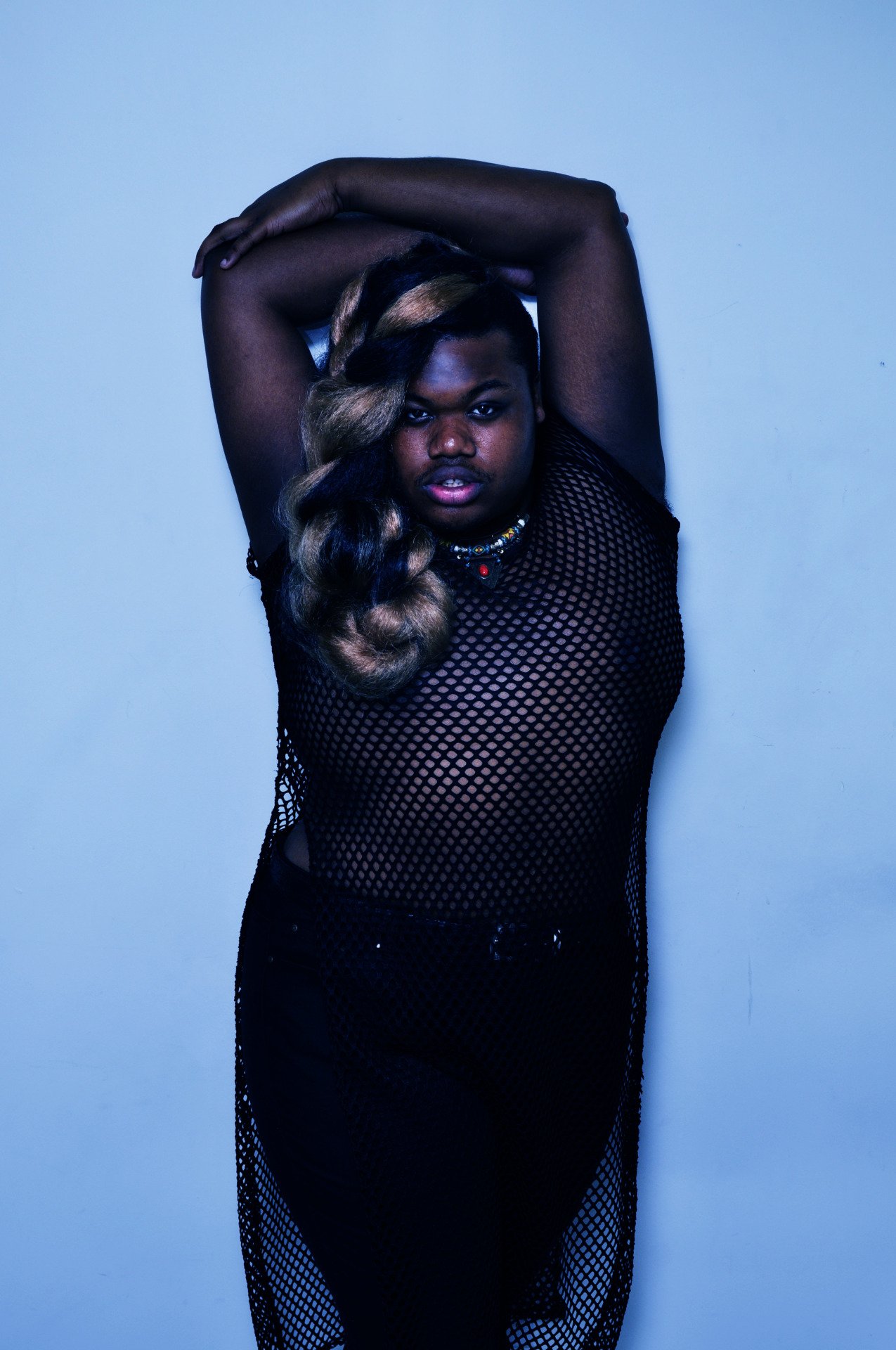 Jarrid Jones as featured on Hi Femme!‘s Instagram
Jarrid Jones as featured on Hi Femme!‘s Instagram
Article:
Two weeks ago, a comment was posted on dapperQ’s Facebook page that seemingly divided many of dapperQ’s loyal readers. Written under a “Hi Femme!” feature, the commenter observed that dapperQ hadn’t featured any “butches” or “masculine of center”-focused fashion in over a month. The commenter stated that, if dapperQ continued posting about femmes / femme fashion, they were going to seek representation elsewhere, and tell their MOC-identified and butch friends to do the same.
Reading this comment, and the responses, we realized that many people do not understand why “Hi Femme!” is so important and why it deserves to share space on a platform originally pioneered to feature masculine-of-center fashion.
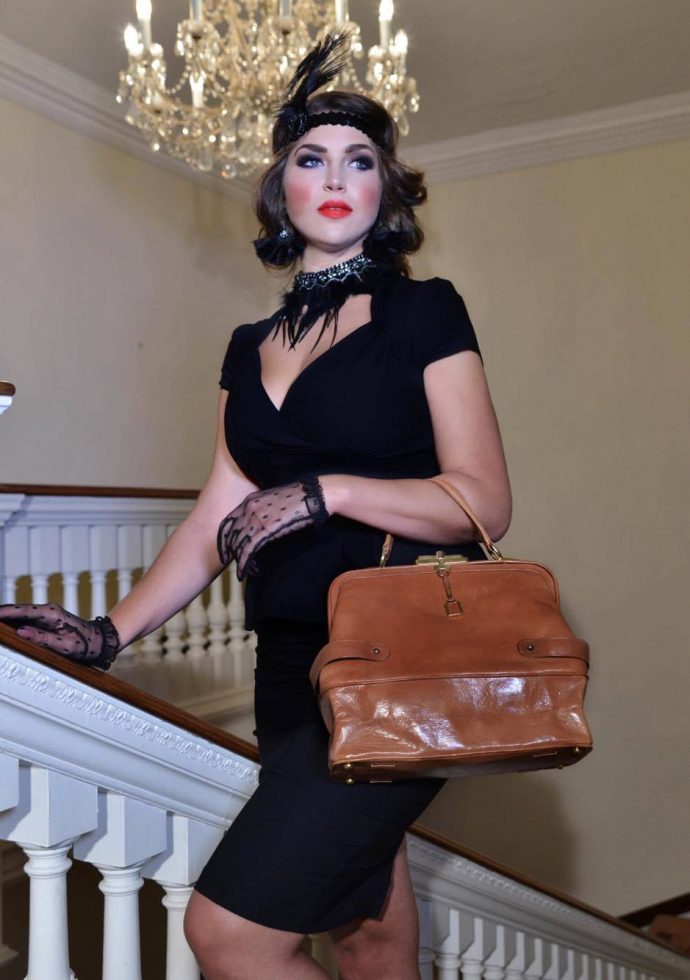 Chaka Bachmann/The Defiant Femme, from Hi Femme! Feature
Chaka Bachmann/The Defiant Femme, from Hi Femme! Feature
I am not Femme because of hegemonic society, I am Femme despite it. I used to be quite a Tomboy and I think in a lot of ways I still am, but when I came out as queer, Femme gave me the opportunity to embrace all that delicious femininity that I was holding inside me. Femme is so fluid and in its fluidity it is powerful. A way to create counterspaces where we celebrate all forms of feminine presentations. For my own style, it means to play with imaginations of hyper femininity, parodying, embracing, reclaiming and deconstructing them. For the next Femme it can mean something completely different – that is the beauty of it. — Chaka Bachmann / The Defiant Femme, from Hi Femme! Feature
Despite Chaka’s and other femme statements which addressed the radical transgressive qualities of femme fashion, there is a disconnect between some femmes and dapperQ’s original audience around our understanding of the need for femme representation. In considering how to bridge this gap, we thought we might be able to offer some perspective from writing our own stories of engaging with or being femme-presenting in queer spaces. Perhaps sharing the stark experiences we’ve had with gender perception can help further dialogue around femmephobia in the queer fashion community.
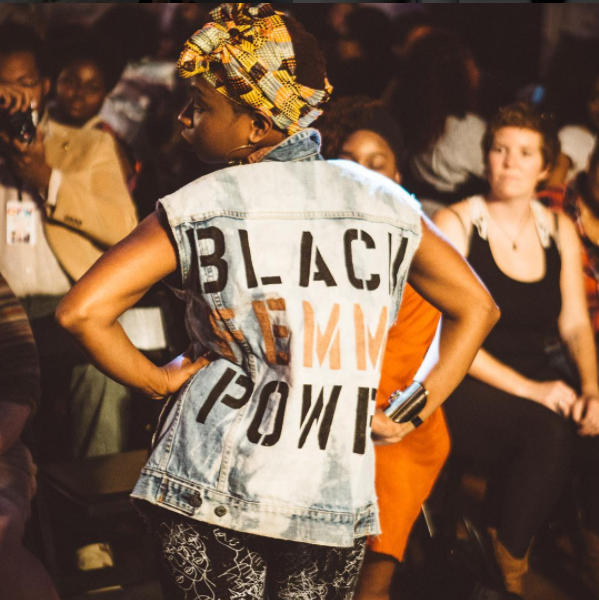 @showtelloakland at @queerfashionweek 2016. Photo by @mollyktadams. From Hi Femme!’s Instagram.
@showtelloakland at @queerfashionweek 2016. Photo by @mollyktadams. From Hi Femme!’s Instagram.
Femmephobia is the hatred, fear, or devaluing of anything that is perceived as feminine. In the queer community, femmephobia has additional meanings — the hatred, fear, or devaluing of those who identify as femme (which may or may not align with those who are perceived to have feminine characteristics, mannerisms, interests, or other features). Femmephobia is a byproduct of sexism, and the two work in concert to prevent femmes from having autonomy over their presentations, personhood, sexuality, and stories within a larger queer frame.
Often when we talk about femmes, we think of the images we see in popular media and forget to include intersectional identities. Understanding the intersectionality (the ways in which oppressive institutions are interconnected) of femme identities is imperative to a conversation on femme representation and inclusion.
Intersectional discrimination might be visualized as multiplying numbers. If you are on the receiving end of sexism, you will face many disadvantages. If you experience femmephobia, you will have additional disadvantages. Often, we have an incomplete understanding of intersectional discrimination in thinking that when a person experiences more than one type of oppression, the disadvantages are simply added together. The experience of intersectional oppression often means that the disenfranchisement is multiplied — because for every experience that a person has with sexism, it can be experienced in relation to femmephobia, or any other kind of oppression. If you include other factors such as racism, xenophobia, fatphobia, etc., these are all multiplied again.
When we refuse to acknowledge how these systems work together, it’s often because it’s easier to deny that certain people suffer from so many structural disadvantages than to face the truth. Often, by accepting that this is the case, we have to accept that we are all complicit in reinforcing these structures. As members of a marginalized group, we it’s easy for us to get caught up in our own experiences rather than viewing the full picture of structural inequalities.
Many readers have questioned the validity of masculine privilege among the butch/ masculine presenting community, given that women and gender nonconforming individuals who don’t pass as male also suffer from harassment and discrimination. We must recognize that both of these things exist simultaneously. We can uphold a power structure while also being oppressed by that same structure.
Sonny: For me, I find that at times dealing with transphobia is so overwhelming that I don’t have any emotional energy left to consider what my experience might be like if I were also a person of color, or disabled, or hadn’t had access to higher education. And I think it’s okay that I can’t wrap my head around what that would be like — as long as I acknowledge that experiences exist which are infinitely more difficult than my own, and I work to make space for these narratives.
This is what “Hi Femme!” is all about: providing a platform for the stories of people who have been silenced. The queer community at large places less value on femme experiences than the experiences of those who embody masculine characteristics.
Sonny: I know this firsthand because I presented as femme for many years. It’s not something I like to talk about, mostly because I don’t like to remember it. It conjures up memories of feeling trapped in my body, crippled with dysphoria and depression. But I’ve noticed a lack of awareness and perceptiveness among the greater queer community when it comes to listening to femmes, and this is why I am choosing to tackle the topic of masculine-presenting privilege.
In providing my own story, I might be able to help demonstrate the ways in which sexism operates. In my case, I went from being perceived as femme to being perceived as masculine, but my hobbies, interests, intelligence, and speech patterns all stayed the same. While I gained confidence through presenting my authentic self and from growing up, the differences in how the world perceived me were like night to day. Experiencing both sides of sexism has given me a hyper-awareness to the ways in which sexism and femmephobia operate in our culture. My hope is that my experience can help illustrate these systems to folks who haven’t necessarily experienced both sides of the extreme.
This is not an attempt to take away from the stories of actual femmes, but rather to lift some of the burden off the femme community by expressing my solidarity towards the necessity of projects like “Hi Femme!” As much as femmes can say “we deserve representation on dapperQ,” us non-femmes also need to say: Yes, femmes not only belong here, but femmes add value to the dapperQ platform.
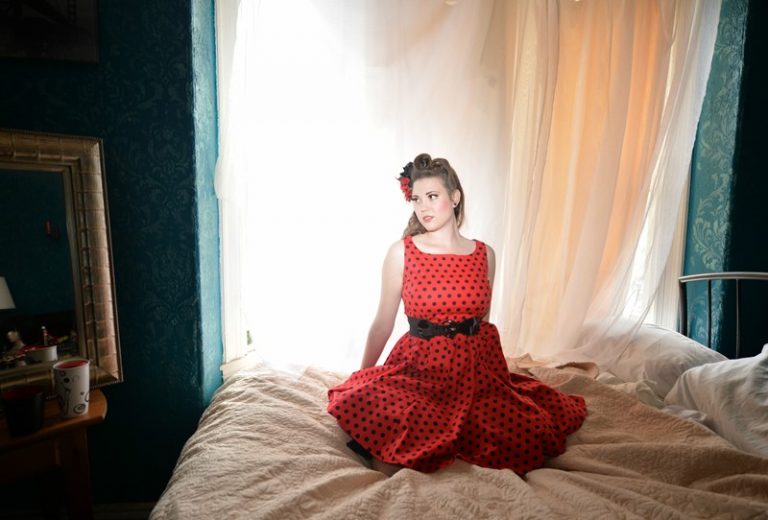 Meghan Eason, from Hi Femme! Feature, Photo by Martin Quin for Noir Photography
Meghan Eason, from Hi Femme! Feature, Photo by Martin Quin for Noir Photography
Sonny: For me, presenting femme was my way of coping with not being able to live as my authentic self. I thought that I could force myself into being a “woman” by aligning my presentation with society’s narrowly socially constructed definition of what womanhood means. Ultimately no version of womanhood fit, whether I ascribed to social norms or not. I wore dresses and other form-fitting clothing. I wore long hair and makeup on special occasions. I hung out with many straight, cis-girls who taught me the ropes of acting “naturally” feminine. And I think that I fit into heteronormative beauty standards — that is, when I wasn’t going through a crying fit or having a mental break down.
Inside, I was a nonbinary genderqueer trans guy, but no one around me knew. Not even my therapist, who couldn’t figure out why I suffered from such extreme depression and anxiety.
I can never claim that I know what it’s like to be a woman, because I was never a woman. In my experience, I still benefitted from male privilege by simply having an internal understanding that I was male. For example, I did not see myself as a part of the struggle for women’s reproductive rights because I was emotionally detached from my reproductive organs, and I certainly was not engaging in any type of sexual activity that would get me pregnant. It’s not that I wasn’t passionate about it, but just that I didn’t feel it affected me personally. So, a lot of the hate thrown at women around these issues didn’t have personal implications for me.
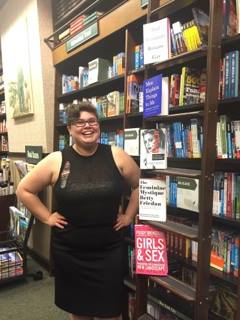
Jaime: In my personal interactions with friends and partners, I often encounter a lack of awareness around reproductive health, sexual health, IUDs, abortion, etc, from butch-identified or masc-identified queer folks. And, I believe it’s because we have often been socialized by the LGBTQ community and the medical community to focus on our own presentations, gender identity, and sexual orientation before supporting others in the alphabet or understanding their struggles. Even on the basic sexual health front, for cis-female, nonbinary, and trans-identified LGBTQ folks, we are still told by medical care providers that we don’t need to get tested or worry about STIs because there is a lack of understanding of our sexuality and how AIDS, HIV, and STDs are transmitted between non-heterosexual partners.
I still remember when I came out as bisexual and queer to a close family member, who is a medical-care provider, and the first thing they told me was that I was going to get HIV and die. That was the same year I went to the health clinic on my college campus and the medical staff there told me I didn’t need to worry about STDs if I was just sleeping with other women, and the same year that my first female partner told me she didn’t worry about getting tested since she was just sleeping with other women.
For an example of people and art in our community doing work to make space for these conversations, look no farther than the film “Bumming Cigarettes,” by Tiona Nekkia McClodden. The film does an amazing job of showcasing the need for additional awareness and care around these topics in our community and the importance of prioritizing each other’s well-being in the many diverse ways we express our gender, sexuality, and orientations. Tiona’s work is important and boundary-breaking in our community because it addresses topics often left overlooked by people who fit into the mainstream queer narrative.
I share this to say that spaces like Hi Femme! are important specifically because they bring individual narratives of femme identity onto a platform that juxtaposes those narratives with other LGBTQ identities. We need that cross-pollination in our cultural world, so that our conversations about our bodies and our private spaces can be less essentialized and start from a place of better understanding. I welcome those spaces in film, fashion, activism, and more. Being part of the LGBTQ community isn’t, for me, part and parcel with just being represented in one space or on one topic (sexuality, gender presentation, gender identity, political beliefs, etc). I think, like many in my community, I demand more of the arts and cultural venues that write about and feature us: more femmes, more people of color, more representation of trans folks, more, more, not fewer of any of us. And I demand that we are represented more fully.
These spaces are needed not so that we can consume one another’s aesthetic more, but so that we can normalize and appreciate each other. Upholding masculinity as the norm aesthetic in our community, to the detriment of folks who don’t vibe with that presentation or codes of behavior, is damaging to all of us.
Gay men can also display femmephobic attitudes. Tim Wilfong, a self-identified cis-gay man, reflects on his experiences with femmephobia in the gay male cisgender community:
As it’s becoming more ‘acceptable’ for cis-men to identify as gay, we haven’t done enough to combat the traditional, heteronormative directive that men should be ‘real’ men, masculine men who see femininity as weakness, equate flamboyance with lower social status, and feel the need to prove to themselves (and often their families and friends) their ‘normalcy.’
I don’t think this is new. Femme gay men have always been somewhat fetishized. You see it throughout the 19th and 20th centuries: Look at the friendship of Will and Jack (played by a straight man and a gay man, respectively), look at the photography of Robert Mapplethorpe, look at Sutherland in Andrew Holleran’s novel Dancer from the Dance. Look at Dorian Gray. As gay men struggled to come to terms with their sexuality over the last 120 years, they have struggled with understanding, accepting, and rejecting gender and social norms, probably based in their own fears of or self-loathing from being gay.
The fetishization of femininity that Tim reflects on is an important reminder that femmephobia affects all of us who are perceived to be feminine. Bullying within the gay male community is deeply tied to sexism and femmephobia, and this supports the structures that oppress and devalue femmes and those who we perceive to be female. We see time and time again that a culture which supports bullying and the objectification of femmes can quickly lead to harassment and violence.
Sonny: When you present in a way that’s read as “female,” the sidewalk becomes a hunting ground and you are marked as the prey. When I presented as femme, men didn’t care if I was interested or not, because to them I was just a body. I had to be hyper aware as I navigated the world because men would eye me or try to talk to me, and I often forgot that I was presenting female, so I was constantly caught off guard. Street harassment is a safety and personal violation for anyone on the receiving end. In my experience, it was also a shocking reminder that my presentation did not reflect who I was. Think of Quagmire, the womanizing trope in Family Guy, the time he woke up as a woman and was faced with sexism and objectification for the first time. That was me every day.
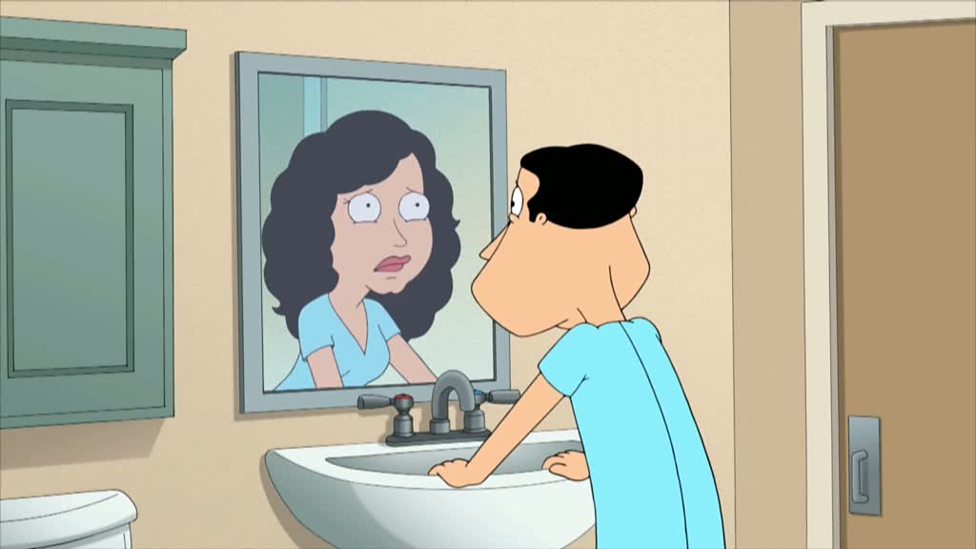 (Valentine’s Day in Quahog Season 11, Episode 12)
(Valentine’s Day in Quahog Season 11, Episode 12)
As if that wasn’t jarring enough, objectification wasn’t the only thing I had to deal with. Men talked over me all the time. If I was outnumbered by men in a group, they would interrupt me, speak right over me, and take little interest in my opinions. They would project their deep voices so loudly that my voice sounded like just a little insignificant squeak in the wall. If you’ve never experienced this, let me just tell you, it feels horrible to be undervalued — over and over and over again. You can’t compete with them. You may try to raise your voice or assert yourself more, but they will always talk louder, always take up more space, and always interrupt you. There’s just no winning, and it’s easy to grow resentful towards men in general.
If you have not experienced sexism in this way, imagine that, on top of all of this, you aren’t being accepted into queer circles. Many of us queers rely on safe(r) spaces for our survival. Femmes are met with objectification from the outside world, and then when they come to what’s designed to be a safe(r) and affirming space for LGBTQ folks, they aren’t respected there either.
Jaime: From my experience as a cis-queer woman who often presents as femme, and many that I’ve heard from friends and acquaintances, when femmes enter queer spaces, more often than not we are met with contempt. We are labeled “fag hags” or questioned regarding why we are there, forcing us to come out or prove ourselves over and over again.
Many cis-passing, hetero-passing, and queer-identified femmes have articulated to me that every day and every social interaction requires them to decide if they want to pass or “validate” their queerness for the benefit of others. Femmes are constantly told explicitly and implicitly that we are not “queer enough.”
Bisexual cis-femmes are often defined by the gender or PERCEIVED gender of our PARTNER(S) rather than having our own assertion of our identities accepted. We are often required to prove our queerness by listing the number of same-sex partners we have had or explain why we may currently be dating someone of a different gender.
This sort of emotional labor is exhausting and it’s often invisible to those of us who are read as queer from the jump. In so many ways, our community rejects that femininity and queerness in women, female-presenting, or FOC individuals can exist simultaneously. For example, Rosemarie shares:
I remember being told I’d never meet a girl with my hair as long as it was when I entered college. I was belittled and questioned for my sexual history with men though I openly identified as a lesbian at the time. I was told that I looked like a ‘bottom’ and for femmes that means I’m probably just a SLUG (Smith Lesbian Until Graduation). — Rosemarie Monan
(Here are some great resources about bi erasure and femmephobia. And here are a few more.)
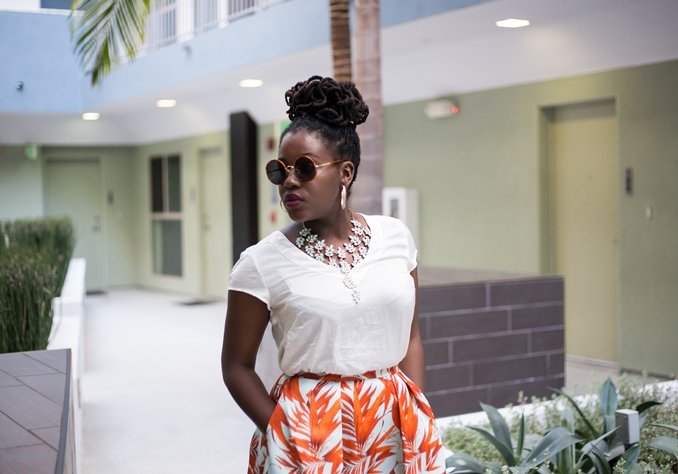 Debbie-jean Lemonte, from Hi Femme! feature
Debbie-jean Lemonte, from Hi Femme! feature
Sonny: I never knew how much easier my life would be once I gained masculine-presenting privilege. And I don’t even pass most of the time, but it doesn’t matter. My presentation embodies the absence of femininity, and this saves me from cat calls and objectification. No one speaks over me any more.
Yes, I do experience harassment due to being trans, and I don’t intend to downplay the daily struggle transmasculine people face, even those of us with race and class advantages. It’s not really helpful for me to choose to focus on one form of oppression or the other. But there definitely was a particular fear of rape, assault, and the stripping of my personhood involved with presenting femme that I no longer have to deal with. I am both grateful that I no longer have to deal with this violence and terrified for all the femme-presenting people in my life who do.
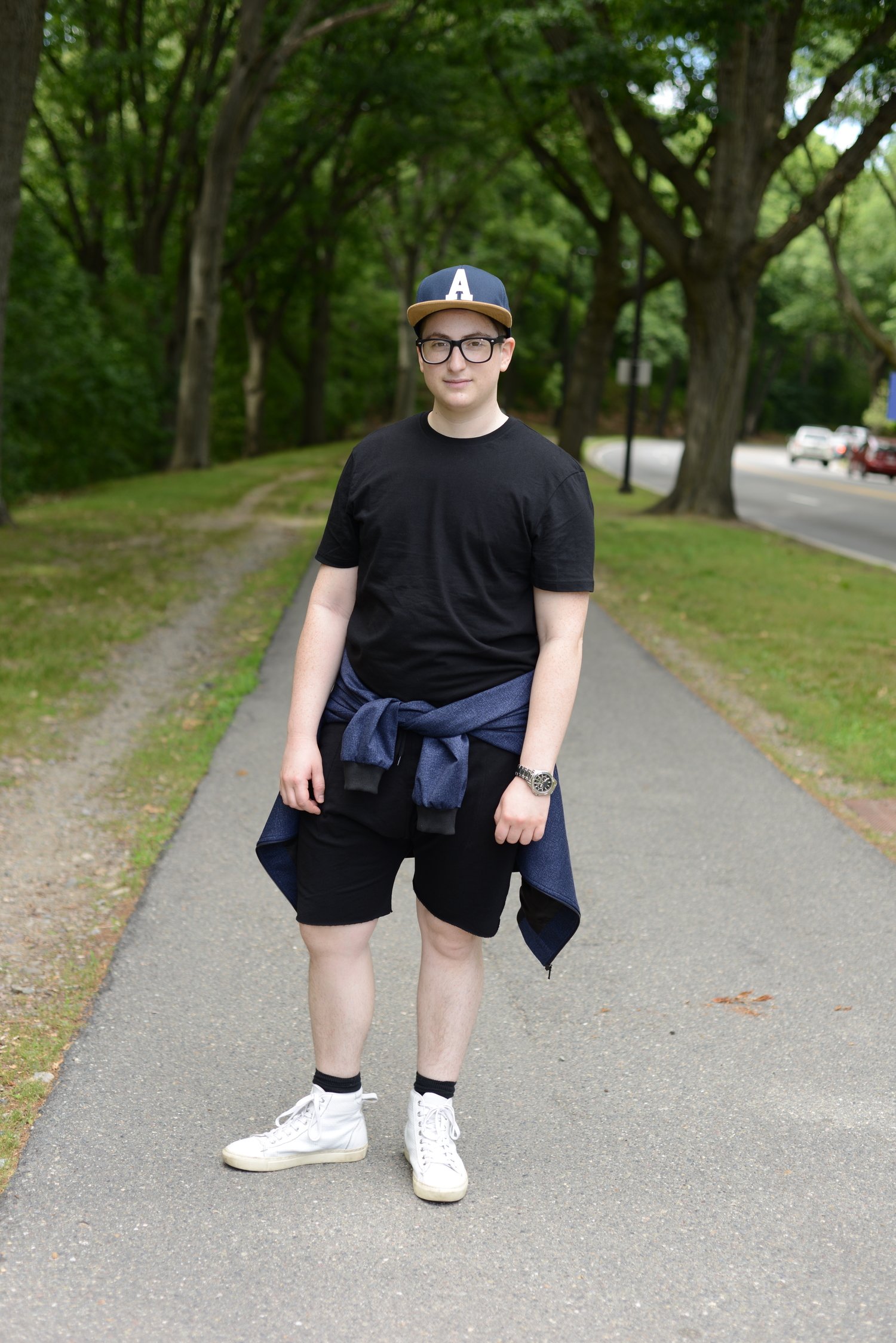 Sonny Oram, photo by Sam Murray
Sonny Oram, photo by Sam Murray
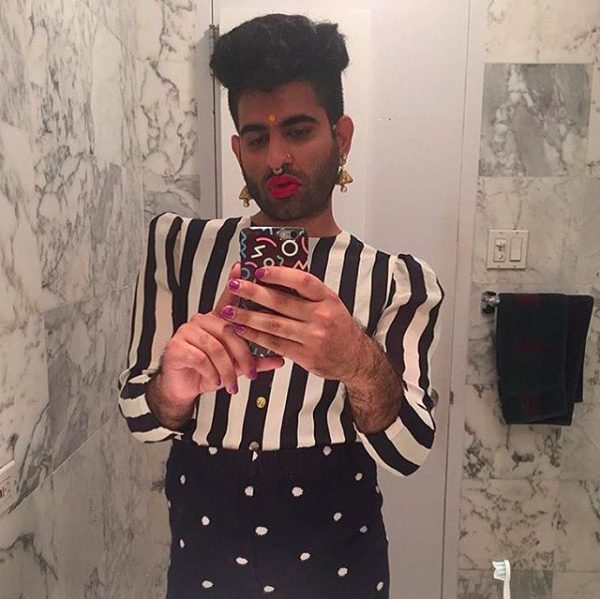 Alok Vaid-Menon from Dark Matter Poetry, as featured on Hi Femme!’s Instagram
Alok Vaid-Menon from Dark Matter Poetry, as featured on Hi Femme!’s Instagram
It may appear upon quick glance that femmes have plenty of representation in the mainstream media, but this is really just a representation of a small sliver of the population. It also is not the type of representation than many femmes find liberating. Rosemarie Monan comments on the objectifying nature of this representation:
We do receive representation from mainstream media but that representation is a product of male gaze/consumer culture that is exploitative rather than celebratory. Queer spaces and queer fashion were born from the need to celebrate one’s identity in a culture that prefers not to acknowledge that queers exist let alone believe that queerness is something to be celebrated.
Femmes are POC, fat, disabled, nonbinary, trans, gender non-conforming, and femmes don’t always want to conform to heteronormative beauty norms. The L Word cast is great for those who see themselves in that demographic, but there are so many femme stories that go untold. And until that changes, we must make room for femmes in our established queer publications.
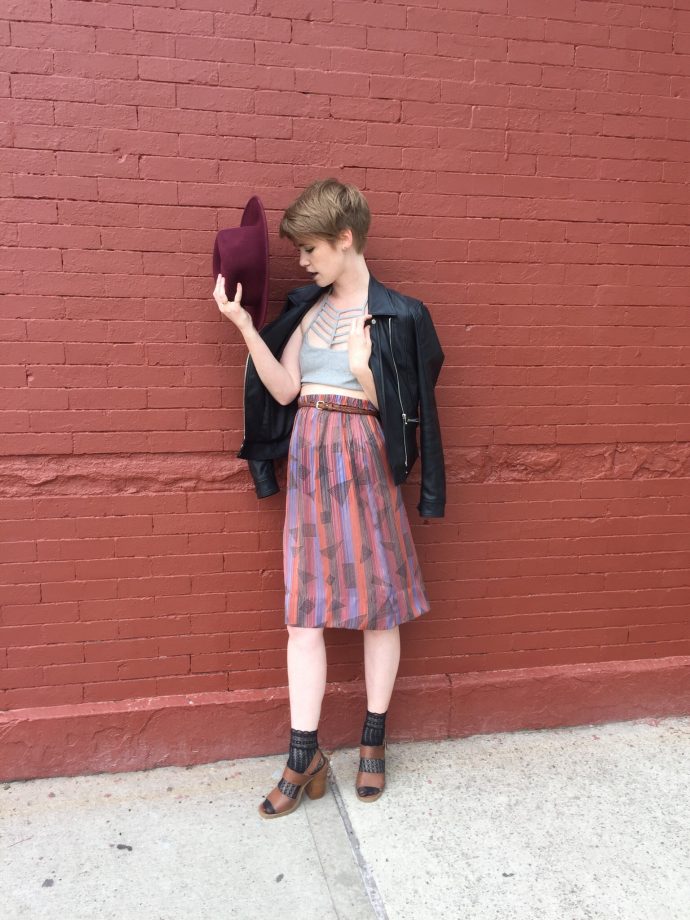 Corrine Kai, from Hi Femme! Feature
Corrine Kai, from Hi Femme! Feature
The truly transgressive thing that comes from queer femme fashion is that femmes are every gender identity. And when we come together in our femme-ness, we are able to celebrate something that society teaches us isn’t worth celebrating: femininity. — Corrine Kai, from her Hi Femme! Feature
But why can’t we just start a separate publication for femmes, some asked? Why do we have to share dapperQ?
dapperQ has been one of the major players in the queer fashion movement now for many years — and dapperQ recognizes that queer fashion is greatly lacking in femme representation. If we look at all the queer fashion brands who have really made a name for themselves, they are almost all brands with masculine-presenting attire. When announcing this project, dapperQ’s owner Anita Dolce Vita, share, “I began to notice that queer fashion media, designs, and conversations that celebrated masculinity were proliferating at the expense of femme visibility.”
Anita noticed that masculine fashion was quickly gaining economic and representational advantages, while femme fashion representation was still greatly lacking, and as dapperQ is a website that is based in social justice values, the appropriate step was to combat this imbalance.
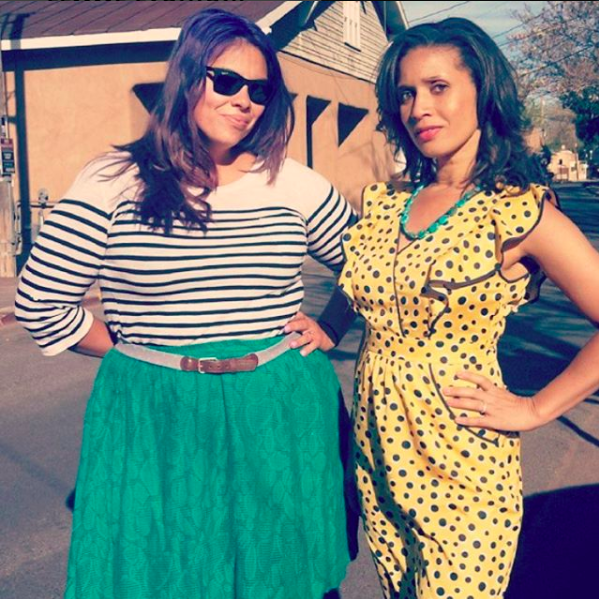 LuzMarina Serrano and Anita Dolce Vita, as featured on Hi Femme’s! Instagram
LuzMarina Serrano and Anita Dolce Vita, as featured on Hi Femme’s! Instagram
We applaud dapperQ for this editorial decision, and we look forward to continuing to enjoy a rich and diverse set of content.
And yes, to answer the original commenter’s question, dapperQ WILL continue to create content for people who identify with a variety of gender identities and expressions, that includes content for masculine-of-center folks and femme-presenting folks.
There is nothing easy about being femme. Femmes have to fight every day for their existence and personhood, for their ability to be seen as human, to be accepted by the queer community, even to be acknowledged as intelligent, wise, and worthy. Having to prove yourself every second is exhausting. Femmes never get a break.
In the comments, we invite butch / MOC / transmasculine folk to reflect on what you have learned in terms of how to support and care for femme folks, particularly outside of romantic relationships. Femmes, or folks for are FOC, we’d love to hear from you about times the former group has stepped up to support you, and what that looked like for you.
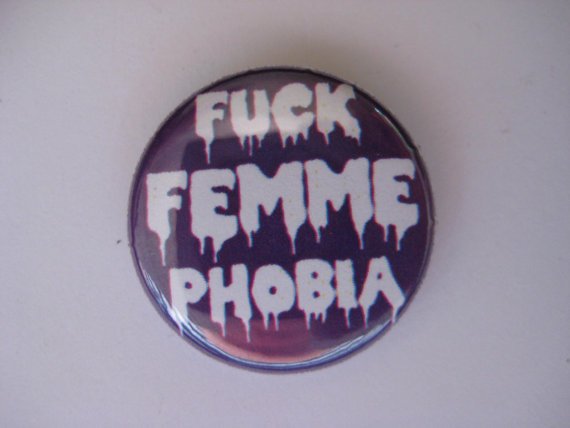 Pin by Olivia McPherson, WickedQueer
Pin by Olivia McPherson, WickedQueer
Additional tips from July Westhale via The Establishment:
Do Not:
- Assume all femmes/FPP are cisgender or cis-sexed.
- Assume all femmes/FPP do or do not identify as lesbian, queer, female, bottom, or submissive.
- Assume all femmes/FPP are passive and/or weak.
- Tell a self-identified femme that they are not a femme.
- Pressure those you see as femme to identify as femme.
- Become threatened or violent when a femme/FPP steps outside your view of what it means to be femme or feminine-presenting.
- Expect femmes/FPP to educate you on identity politics, misogyny, or misogynist-driven community violence.
Do:
- Hold femmes/FPP up for the individuals they are, without expecting them to conform to society’s views of normative femininity.
- If a femme/FPP has specific sexual preferences or boundaries, please know and accept:
*It is not about you.
*It doesn’t make them more or less queer.
*It doesn’t make them more or less of a femme/FPP.
- Ask for help or engage in conversations with your community about how to deconstruct or learn about your own privilege in relation to the further marginalized people in your communities, including but not limited to femmes/FPP.
- Stand up for femmes/FPP when people speak disparagingly of us. Challenge misogynist thinking.
- Take accountability for your own actions. Think about your positionality within your community, and how you may or may not be contributing to oppressive structures of hierarchy.
- Empower yourself to expand your education about different identities within your own community. Read widely and voraciously from the multitudes of zines, articles, discussion forums, and anthologies available to you (like this and this). Like the talented and articulate Mia McKenzie, among many, many others. If you have any questions or concerns, ask your community for help.
- Allow yourself to be called out, and to call others out, responsibly and constructively.
*dapperQ’s Community Voices is a platform for and by the community to share stories, opinions, and essays. We embrace diverse points-of-view and welcome you to join the discussion in the comments section below, on Twitter, or by pitching your own pieces for publication via [email protected]
